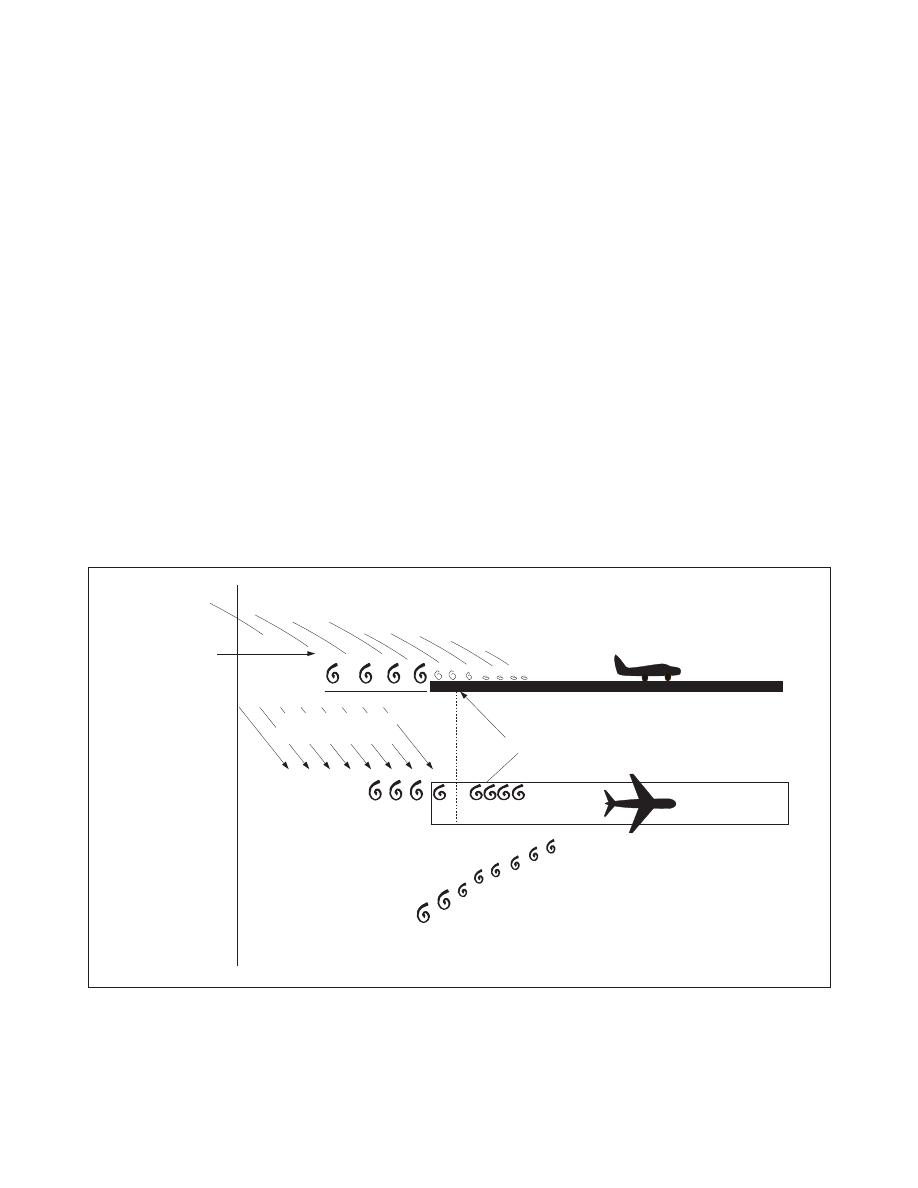
AIM
4/3/14
7−3−4
Wake Turbulence
5.
There is a small segment of the aviation
community that have become convinced that wake
vortices may “bounce” up to twice their nominal
steady state height. With a 200−foot span aircraft, the
“bounce” height could reach approximately 200 feet
AGL. This conviction is based on a single
unsubstantiated report of an apparent coherent
vortical flow that was seen in the volume scan of a
research sensor. No one can say what conditions
cause vortex bouncing, how high they bounce, at
what angle they bounce, or how many times a vortex
may bounce. On the other hand, no one can say for
certain that vortices never “bounce.” Test data have
shown that vortices can rise with the air mass in which
they are embedded. Wind shear, particularly, can
cause vortex flow field “tilting.” Also, ambient
thermal lifting and orographic effects (rising terrain
or tree lines) can cause a vortex flow field to rise.
Notwithstanding the foregoing, pilots are reminded
that they should be alert at all times for possible wake
vortex encounters when conducting approach and
landing operations. The pilot has the ultimate
responsibility for ensuring appropriate separations
and positioning of the aircraft in the terminal area to
avoid the wake turbulence created by a preceding
aircraft.
b.
A crosswind will decrease the lateral movement
of the upwind vortex and increase the movement of
the downwind vortex. Thus a light wind with a cross
runway component of 1 to 5 knots could result in the
upwind vortex remaining in the touchdown zone for
a period of time and hasten the drift of the downwind
vortex toward another runway. (See FIG 7−3−6.)
Similarly, a tailwind condition can move the vortices
of the preceding aircraft forward into the touchdown
zone. THE LIGHT QUARTERING TAILWIND
REQUIRES MAXIMUM CAUTION. Pilots should
be alert to large aircraft upwind from their approach
and takeoff flight paths. (See FIG 7−3−7.)
FIG 7
−3−7
Vortex Movement in Ground Effect
− Tailwind
Light Quartering
Tailwind
Light Quartering
Tailwind
x
Tail Wind
Tail Wind
Touchdown Point
Touchdown Point